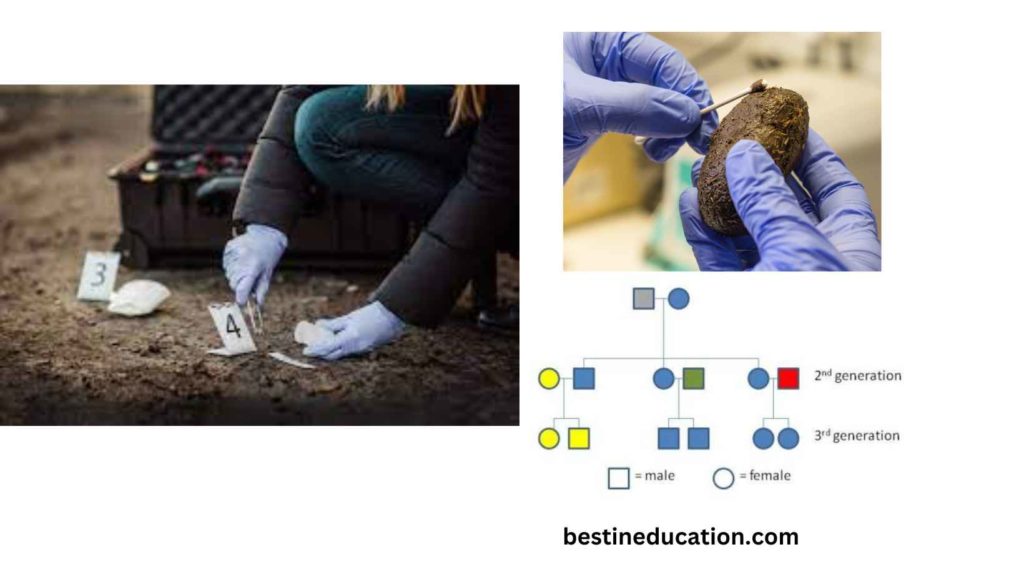Mitochondrial DNA or mtDNA analysis is super useful for solving cold cases and dealing with tiny bits of evidence. It’s sensitive enough to work with old stuff and small samples that don’t have much biological material.
Plus, because mtDNA comes from your mom, scientists can compare the mtDNA of a set of remains to known samples from family members like the mom, brothers, sisters, or other maternally related folks of a missing person. These samples should match because everyone in the same maternal family inherits the same mtDNA.
However, since lots of people can have the same mtDNA type, you can’t use it to make a unique ID. But it’s great when regular DNA analysis can’t be done.
And also A mystery nuclear DNA sample is compared to an mtDNA sample discovered at a crime scene. Likewise, an unidentified mtDNA sample is linked to the mtDNA found at the same crime scene.

The Power of Mitochondrial DNA in Crime Solving
One effective method is using mitochondrial DNA (mtDNA) typing, discovered in 1963 by Margit Nass and Sylvan Nass, with the first sequence published in 1981. This discovery is relatively recent compared to nuclear DNA, which is what usually comes to mind when we think of DNA.
MtDNA is particularly useful in unsolved cases because it’s more abundant in cells, increasing the chances of successful extraction compared to nuclear DNA. Even evidence like hair strands or older bones that might lack nuclear DNA can still contain mtDNA, which forensic scientists can extract to help solve crimes.
For more insights into mtDNA and its applications, we spoke with Dr. Michael Coble, an associate professor at The University of North Texas Health Science Center at Fort Worth. He’s an expert in mtDNA and has played a role in solving cold cases using this technology.
Where Is Mitochondrial DNA Useful?
Mitochondrial DNA (mtDNA) is particularly useful in various contexts, including:
- Unsolved Cases: MtDNA is valuable when traditional nuclear DNA analysis fails to provide results. It can help identify individuals when nuclear DNA is degraded, damaged, or unavailable.
- Ancient DNA: MtDNA is well-suited for analyzing ancient remains, such as bones or teeth, where nuclear DNA has often degraded over time. This makes it essential for studying human evolution and migration.
- Forensic Investigations: MtDNA can be extracted from a wide range of forensic samples, including hair, bones, and teeth. It’s especially helpful in cases involving cold cases or missing persons where nuclear DNA may not be available.
- Maternal Lineage Tracing: MtDNA is inherited exclusively from the mother, making it a valuable tool for tracing maternal lineages in genealogy and anthropological studies.
- Population Genetics: MtDNA analysis helps researchers understand human population genetics, migration patterns, and the evolution of different populations.
- Medical Research: mtDNA mutations are associated with various inherited mitochondrial diseases. Studying mtDNA can provide insights into these disorders and potential treatments.
- Species Identification: MtDNA is used in wildlife forensics and conservation efforts to identify species, trace their origins, and combat illegal wildlife trade.
- Evolutionary Biology: MtDNA analysis is vital in studying the evolutionary relationships between species and populations across the Tree of Life.











